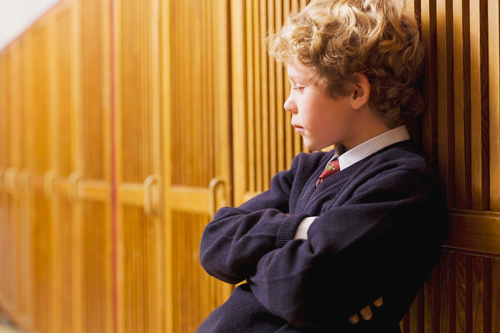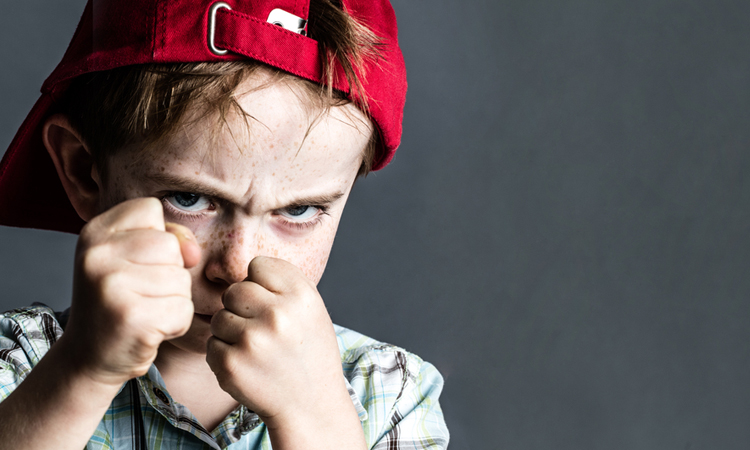Bullying in schools is an ongoing problem. Take it from someone who has experienced bullying firsthand.
As a parent, I want my children to feel safe, but I often feel powerless when one of them comes home and tells me they were bullied. In a recent conversation with Andrew Faas, the founder of The Faas Foundation and author of The Bully’s Trap: Bullying in The Workplace and the soon-to-be-released, From Bully to Bull’s-Eye, he gave me advice for parents on how to help their children avoid becoming either the victims or the perpetrators of this damaging behavior.
1. When it comes to bullying, how can parents help their children? What if your child is the bully?
The best way parents can help their children is to, at an early stage of their development, instill in them the basic principle of “Do unto others as you would have them do unto you.” Parents and their children should have critical discussions on bullying – not just tell them it’s wrong, but closely listen to understand how children feel about what is likely the most challenging aspect of their lives.
Children need to understand the position they are in as bystanders to become witnesses, defenders, resistors and activists. These discussions need to be intense and relevant to what they experience or observe. The huge negative impacts need to be discussed, specifically the fact that bullying kills, and that most people who are bullied are scarred for life. As with most of what we learn as children, the example parents set in their own relationships are usually the most powerful.

If your child is a bully, your child needs to clearly understand the consequences of his or her actions: that bullying kills and permanently ruins lives. If bullying is taking place, your child as the bully needs to be made starkly aware of these consequences, instead of shrugging off harmful behavior as simple joking around. Asking the child, “How would you like someone to do that to you?” should resonate on a deep emotional level.
Additionally, asking your child why they feel the need to lash out at others and discussing that compulsion could be one way to stop that behavior. If you find that serious discussions about the real consequences of bullying don’t resonate with your child, you may require professional help. While that seems out of the question for some, as a parent, it’s important to remember that regardless of social stigma, we need to help our children to prevent any harmful behavior down the road.
2. What about cyberbullying? How can parents protect their kids?
Cyberbullying is perhaps the most dangerous form of bullying because trying to deal with it is like shadow boxing. It’s usually anonymous, and can travel far and wide. It is very difficult for parents to protect their children from this. What parents can do is create the environment for their children to have critical discussions about cyberbullying, pointing out that the bully is a coward who does not have the guts to communicate their message directly to their target.

As with other forms of bullying, parents should reinforce the important role children have in becoming witnesses, defenders, resistors and activists. Immediate and early reporting can help in getting these messages of hate removed.
3. What are some of the signs your child is being bullied?
Any change of behavior and attitude could be an indicator that a child is being bullied. Having daily discussions with your children on how they feel – and more importantly, why they feel the way they do – can be the best method of uncovering early indicators of bullying. These discussions should become the norm in your relationship with them, and if in those discussions you reciprocate by telling them how you feel, there can be no stronger bond.
4. On a larger scale, what can communities and schools do to reduce bullying and create a healthier and happier learning environment?
Many bullying experts have placed proportionately more focus on rehabilitating the bullies rather than advocating stronger obligations that communities and schools have in protecting children from bullying. The best way to create happier, healthier learning environments for our children is to structure our communities into safe zones for kids to express themselves emotionally. We can do this not only by encouraging empathy, but by emphasizing the value of becoming witnesses, defenders, resistors and activists against bullying of any kind.
Additionally, the models parents set for their children are also immensely valuable. Oftentimes, if a parent is a bully, a child learns that behavior, so it’s essential to teach through positive example.
Finally, and perhaps most importantly, it’s central not to tiptoe around the fundamental issue – the human costs of bullying. Kids do harm themselves and others as a result of bullying, and it’s critical that communities don’t shy away from that truth when speaking to children about the ways they treat others.
From a developmental stage, childhood pranks can develop into behavior that endures into maturity – to the time in their lives when bullying can become a crime. School bullies need to be held accountable and punished proportionately for their actions, but communities also need to recognize the intent and motives behind bullying to truly eliminate it. Perhaps a child lashes out at school because of something troubling at home. In situations like this, as is often the case, schools and families need to understand why bullying occurs at the same time they teach the bully to take responsibility for his or her actions. In order to create the kinds of environments where our children can thrive, we need to break the cycle of bullying that makes our kids feel like the only way they can express themselves is through harmful behavior.

Rose Caiola
Inspired. Rewired.



1 Comment
B Coloroso
Check out The Bully, the Bullied, The Not-so-innocent Bystander just released in the US and a best seller in Canada for what to do if your child bullied and what not to do, the four ways and three means of bullying, the difference between normal, natural, and necessary conflict and bullying, and how to raise bravehearted kids willing to stand up for their peers, speak out against injustice, and to take responsibility for what happens around them.